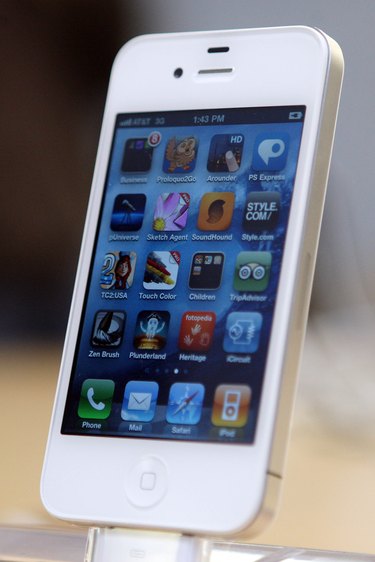
Whether you've seen too many spy movies or recently noticed that your iPhone is acting oddly, you may want to determine if your cellphone has been bugged. While proving this can be difficult, some telltale warning signs can indicate a bug. Many types of bugs exist, so symptoms of bugging can vary. Of course, tapping a phone is illegal unless it is done with a warrant, so if you discover that you have been bugged, you should report it to your local authorities.
Step 1
Record how long it takes for your battery to lose charge. Also record what apps you use and how long you use them, as browsing the Web takes more energy than listening to music or talking on the phone. Unexplained significant losses of power are good indicators of a bug. The iPhone's battery should last for a minimum of six hours with constant use; it should last for almost two days on standby. Use an app such as BatteryLife LX or Battery LED to monitor your phone's battery life.
Video of the Day
Step 2
Feel the iPhone's battery after it has not been in use for a few hours. If the battery feels hot, it may indicate a bug, as the iPhone should not be running.
Step 3
Watch for random, unexplained screen flashes. These are common indicators of a bug, but they could also be a glitch. Reset your iPhone by holding the "Home" and "Sleep/Wake" buttons simultaneously until the Apple logo appears, and make sure all of your apps and iPhone software are up-to-date. If the flashes continue, it is more likely to be a bug.
Step 4
Check your iPhone bill and analyze how closely it compares with your actual usage.
Step 5
Watch for text messages from random, unknown numbers, especially if they are gibberish.
Step 6
Listen for strange noises while you talk on the phone, such as static or popping. Also listen for strange changes in volume.
Step 7
Pay careful attention to the information other people seem to know about you. If it seems like someone knows more than he should, such as details about your personal or business life, your iPhone may be bugged. You can also lay a disinformation trap to catch suspected spies: if you hold a faked conversation on the iPhone with someone you trust, you can see who else seems to know this private information.
Step 8
Check the edges of the iPhone for signs that it may have been pried apart, such as scratches or excess glue. Although most iPhone bugs are actually software, it is not impossible to install a physical bug.
Video of the Day